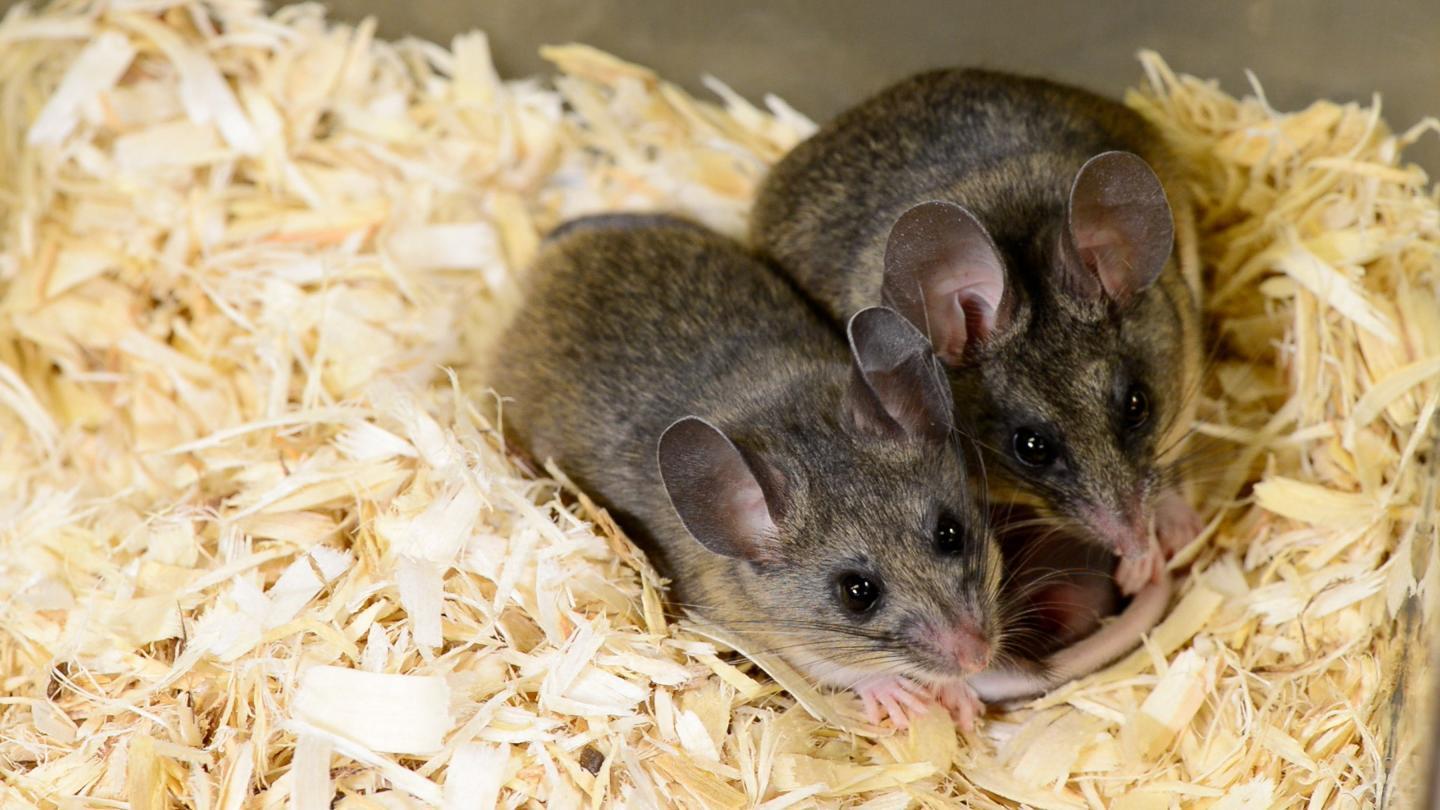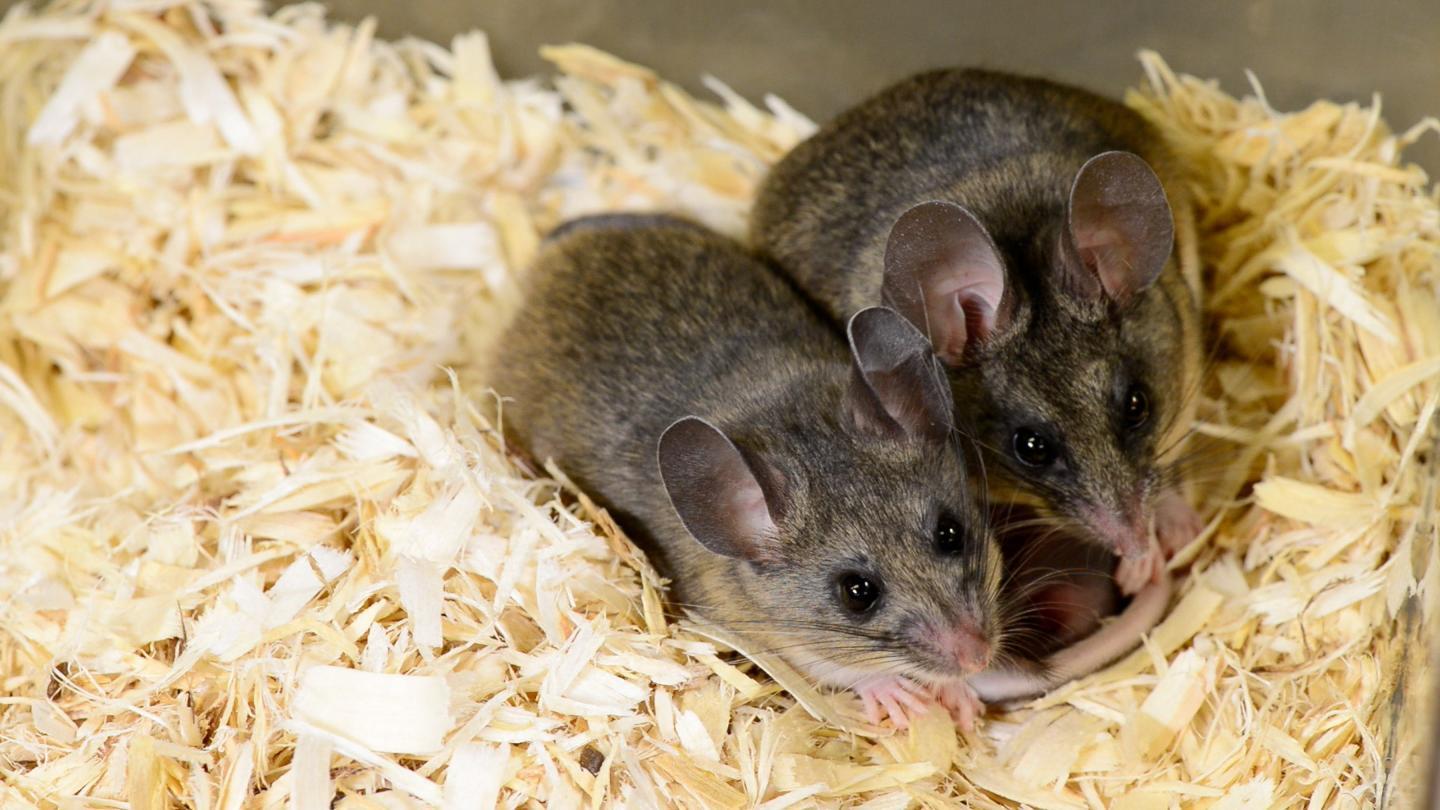
Credit: Photo by Roger Meissen, Bond Life Sciences Center
MADISON — California mice are relatively solitary animals, but put two in a room and they'll talk each other's ears off.
And while all the cooing, chirping and barking they use to woo mates or drive off enemies is at too high a frequency for human eavesdroppers to hear, they may speak volumes about the way the mice form relationships. The quality of their conversations after one partner has been unfaithful can help predict which mouse pairs will successfully produce a litter of mouse pups and which males are good fathers, according to a study published recently by the journal Frontiers in Ecology and Evolution in a special issue on the evolution of monogamy.
"These mice are not gregarious. They're loners," says Josh Pultorak, who studied the mice while earning his doctorate in zoology at the UW-Madison. "They're highly territorial and aggressive — both sexes."
One of the ways they communicate that aggression is through what Pultorak calls barks.
"The barks are just nasty," he says. "It's like a combination of a dog bark and a lion's roar."
That is, when the ultrasonic barks are slowed down to the point that humans can make them out — typically 5 percent of their original speed.
While notorious for their ferocity, the California mouse is also known for its monogamy. Most rodents are promiscuous, but in the wild, infidelity is unheard of among the California mouse. Once they've bonded with a partner in their natural habitat (scrubby woodlands in California and northern Mexico), they don't mate with other another mouse unless their partner dies. Pultorak and his collaborators paired up 55 male and 55 female California mice, recording their body language and vocalizations when they met and again after two weeks.
There were plenty of barks in the beginning. But as the pairs bonded, according to Pultorak, their communication was less aggressive and more affiliative.
"They're making a lot of what we call simple sweeps — which are like quick, one-syllable bird chirps — and more sustained vocalizations, which sound almost like whale noises when they're slowed down enough for a human ear," Pultorak says. "The aggressive vocalizations, the barks, go way down after they know each other."
Then, the researchers introduced an otherwise unknown factor in California mouse relationships: cheating.
Some of the males were moved to live with new females, and some of the females were moved to live with new males. Another group was separated, but not housed with new potential mates. A fourth group was left together.
After a week, the mice given the opportunity for infidelity were reunited, and the researchers set about recording interactions again.
"Compared to when they were nice and sweet before separation, when they came back with their original mates the pairs were aggressive," Pultorak says. "But there was a range. Some of the pairs that had the infidelity encounter were barking a lot, but some of them were much closer to their pre-separation levels of simple sweeps and sustained vocalizations." The pairs that simply lived alone for a week slipped back into their old communication routines, highlighting infidelity (not separation) as the cause of the bump in aggression among the potential cheating cases.
Importantly, it was how the reunited couples worked out the events of their separation that predicted whether they'd have baby mice together.
"The pairs that successfully produced litters were the ones that were affiliative when reunited," Pultorak says. "The ones that showed more aggression were far less likely to produce offspring. That's a big deal. Arguably, it's the whole point of forming pair bonds in the first place."
The researchers also gave the males a fatherhood test, moving a newborn away from the family to see how quickly the dad would respond to comfort, groom and warm the pup.
"The more affiliative or 'loving' and resilient a pair was after that infidelity experience, the faster the male was in responding to a pup's needs," Pultorak says. "They were better dads."
While quality of communication provides a window into the way the mice bond, it's hard for Pultorak to say whether these resilient pairs had what a human couple might consider a better relationship.
"Do they not bark at their partner because they have a stronger bond that's able to withstand the infidelity? Or is it instead a weaker bond, and they don't really care so much about what this other mouse has been doing?" he says. "Maybe they'd be a better match with a different partner anyway, and that's playing into it. We don't yet know that."
###
Chris Barncard, 608-890-0465, [email protected]
Media Contact
Josh Pultorak
[email protected]
330-592-6469
@UWMadScience
http://www.wisc.edu
Original Source
https://news.wisc.edu/successful-mouse-couples-talk-out-infidelity-in-calm-tones/




